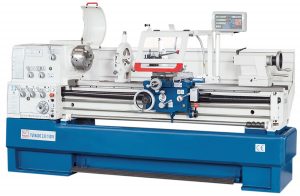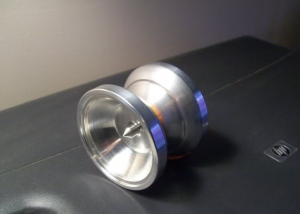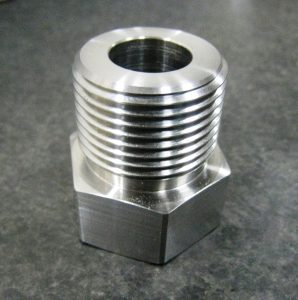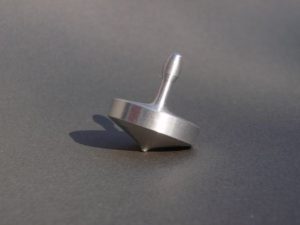Overview of the Machine
- Machine that rotates the workpiece on its axis to perform various operations
- Create parts with symmetry about an axis of rotation
- Lathes can be used when working with metal, wood, glass and various materials.
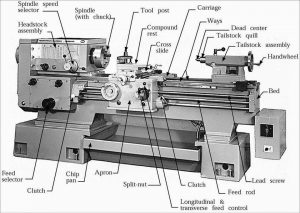
- Part is usually clamped at the spindle with either a chuck or collet
- The cutting tool is placed at the tool pose (unlike the mill, the cutting tool on the lathe is not rotating. Instead the part is rotating at the spindle)
Operating a Lathe
- Make sure cutting tool is sharp
- Make sure cutting tool is held securely in the machine’s tool holder
- The part must be clamped securely in the machine so that it can resist the cutting force
- Set the correct cutting speed, which is depend on material of the part
- Use coolant when working with metal. Overheating of the part may cause undesirable finish and potential damage to the cutting tool.
Three types of cut
- Turning Cut – tool moves parallel to the axis of rotation and remove material from the outside
- Facing Cut – tool moves perpendicular to the axis of rotation to remove material from the end of the part
- Boring Cut – remove material from the inside of the part
Fun fact: The lathe is an ancient tool, dating at least to ancient Egypt and known to be used in Assyria and ancient Greece. The lathe was very important to the Industrial Revolution. It is known as the mother of machine tools, as it was the first machine tool that lead to the invention of other machine tools.
Campus Location:
MechE machine shop (12” Knuth bench lathes w/ Readout)
Architecture shop
Chemical Engineering Machine Shop (DH B211)
Robotics Institute machine shop (first floor of NSH)
Parts you can make with a Lathe
Pros and Cons
Pros:
Great for parts that need to be symmetric around an axis
Can be used for various materials
Don’t need to generate CAD drawing of part
Cons:
Can’t be used to machine parts that don’t have circular cross sections
Parts are limited by size of the chuck or collet
Hard to machine more delicate designs (consider CNC Lathe if part is more difficult to machine)

